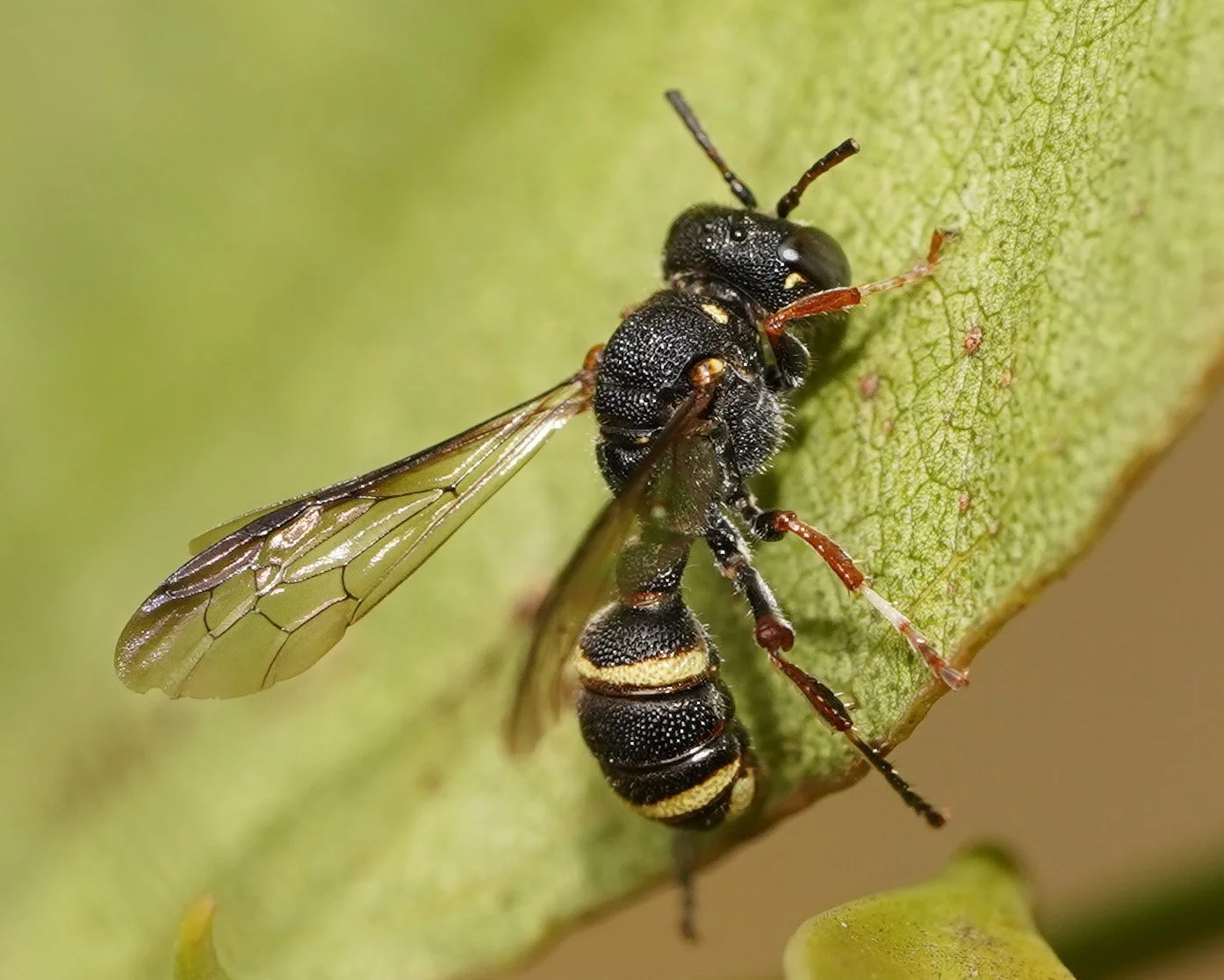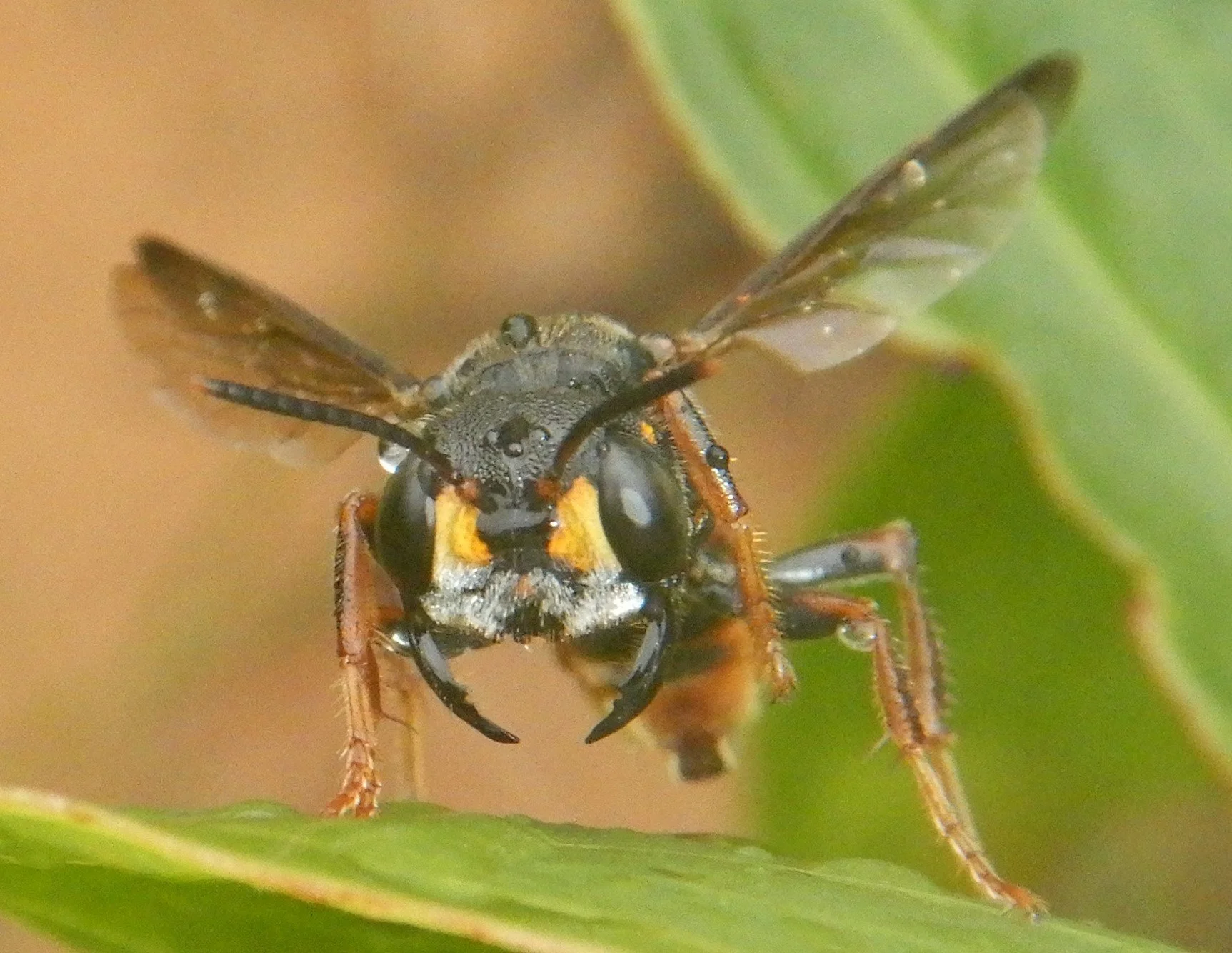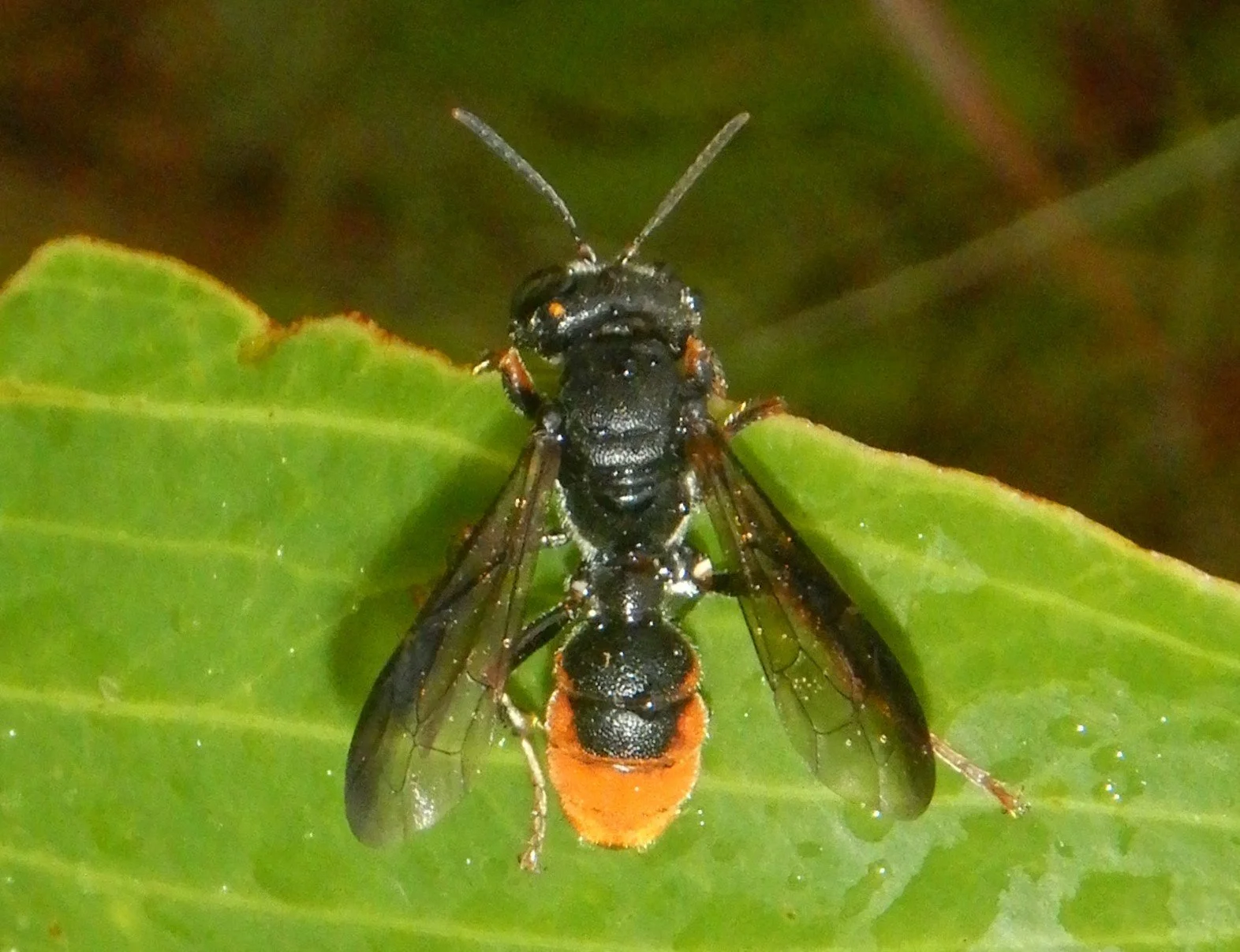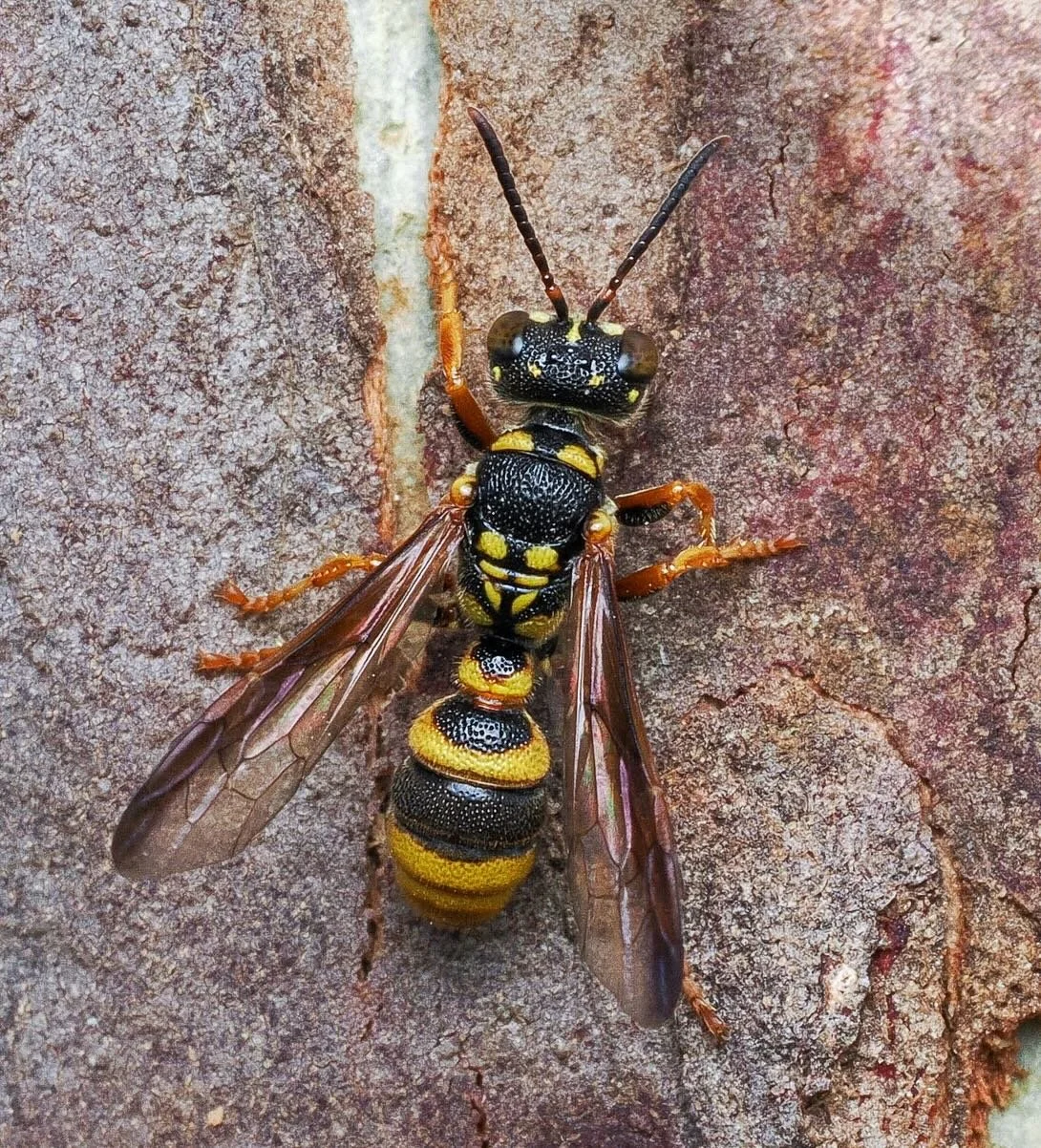
C. antipodes
Male Cerceris are typically smaller than their female counterparts. They can be recognised by the additional visible tergite (T7), although it is often small, and by the number of antennal segments (a total of 13, rather than 12).
The colour pattern of males typically differs somewhat from the female. For example, in southern C. antipodes males the anterolateral spots of T2 are typically large and medially joined to form a continuous basal band.

C. opposita
A dark-looking wasp with limited yellow markings, reasonably common in southeastern Australia.
- note T2 has yellow spots or a band in the apical (posterior) third (in contrast to the anterolateral markings of C. antipodes)
https://inaturalist.ala.org.au/observations/39041814
(image courtesy Reiner Richter)

C. goddardi
The female of this species has a particularly broad head, the eyes divergent below.
The clypeus has a subrecumbent lamina, but it is “broadly incomplete” medially, with the sides curved “mesad and upward”. Viewed from above (or indeed head on, as here), it looks to have a pair of small teeth projecting from the apex of the lamina.
https://inaturalist.ala.org.au/observations/321974098
(image courtesy Scott Gavins)

C. froggatti
The largest of the Australian Cerceris.
- black mandibles & black-brown clypeus
- no clypeal lamella, but there is a pair of tubercles in the centre of the median lobe (not visible here through dense silvery pubescence)
- eyes strongly divergent below
https://inaturalist.ala.org.au/observations/103879235
(image courtesy Donna Maree Tomkinson)

C. froggatti
This species is reasonably common but with an apparently limited range: central NSW through to just north of the Tropic of Capricorn, QLD.
Note:
- the distinctively marked metasoma, including: petiole black; T2-3 black with orange markings latero apically, those on T3 more broad; T4-6 orange
-forewings wings darkened along costal (leading) edge
- petiole particularly wide, & convex both laterally and dorsally
https://inaturalist.ala.org.au/observations/103879235
(image courtesy Donna Maree Tomkinson)

C. multiguttata
- diagnostic colour pattern on the polished enclosure (ie the dorsal triangle) of the propodeum … it is yellow laterally, black medially and basally
- metasoma colour pattern is also distinctive: the petiole yellow but black on basal third; T2 yellow but with a large, mediobasal black spot; T3 black; T4-5 yellow
https://inaturalist.ala.org.au/observations/246741066
(image courtesy Ged Tranter)

C. gilesi
This species is only known from Western Australia, and therefore did not feature in Evans’ 1982 revision. I have included it in the summary table (matrix), along with two other species known from the west. This one is such a good match with the original description that I feel comfortable suggesting the ID … despite no recent review of western Cerceris.
- distinctive colour pattern, with bright reddish-orange markings including T1, T2 and T5 …. but with T3 & T4 black
https://inaturalist.ala.org.au/observations/163623099
(image courtesy Steve Dew)







